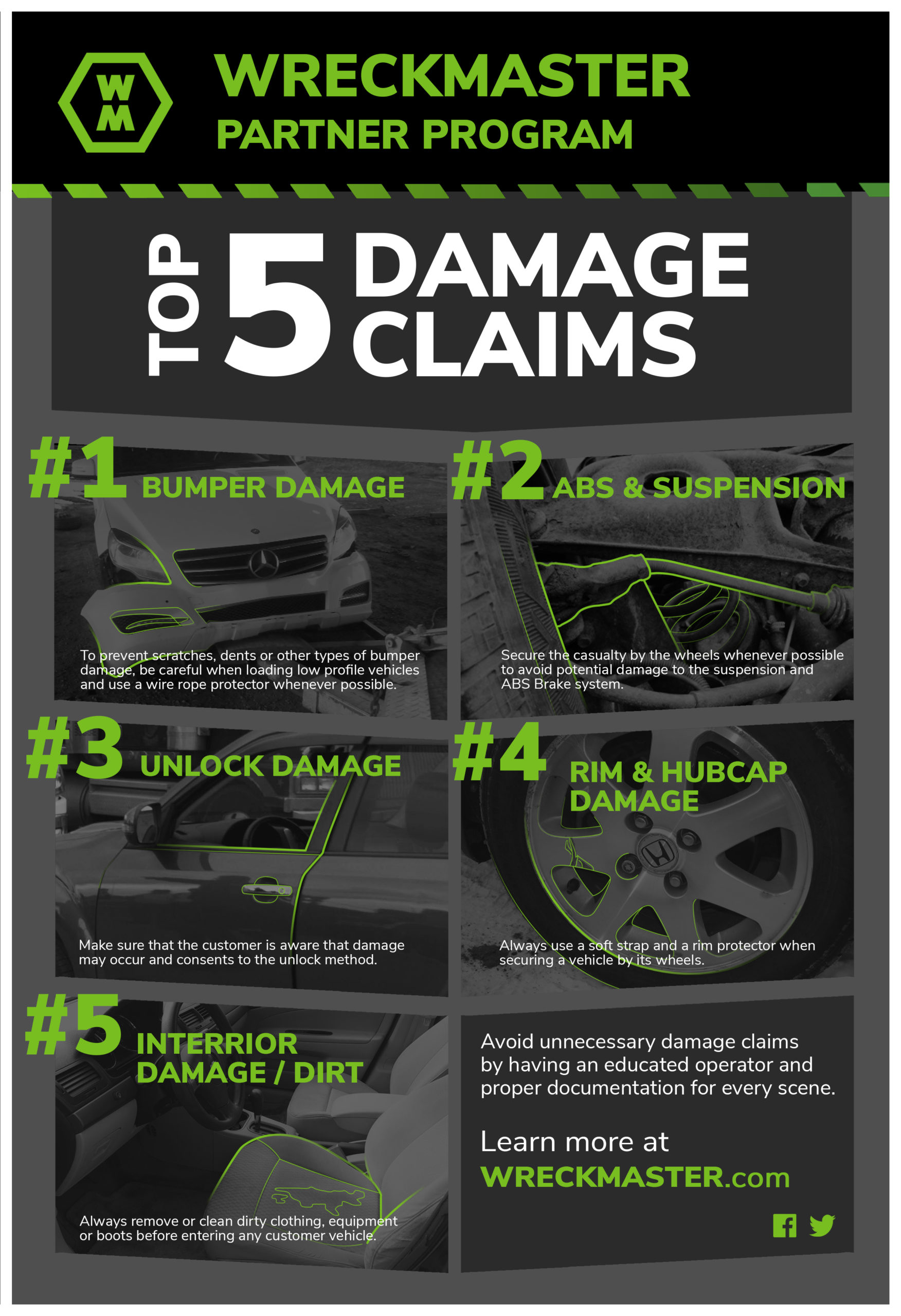RECIEVING CLAIMS
Towing operators are usually called to tow or recover a vehicle that has sustained some sort of damage. This however does not mean that care does not need to be taken when handling a damaged casualty. Every vehicle needs to be treated with extreme care – whether it is an unsalvageable wreck or the finest high-end vehicle on the market. To ensure that an operator is not blamed for damage that already existed on the vehicle, detailed photos should be taken and a report should be made tracking all damage, scratches and dents.
However, an operator may not even be aware that they are causing damage to a casualty while loading and transporting. This infographic is a valuable resource that can educate and remind operators what to watch out for.

FRONT AND REAR BUMPER DAMAGE
Scratches and dents are usually caused by the wire rope, chains or the wheel lift coming into contact with the vehicles bumper. The vehicle can also become damaged if it makes contact with the ground while it is being lifted or transported. Always be aware of how close the vehicle is to the ground and use a bumper protector on the wire rope whenever possible.
WHEEL STUDS & LUG NUTS
If the lug nuts were previously put on too tight or have become rusted over, they can become stripped when doing a tire change. If the nuts do not move, simply tow or transport the vehicle to a location they can be safely removed.
SPARE TIRE HOLDERS
Typically found on trucks and SUV’s, spare tire holders can become damaged if they make contract with the ground or if they are forced open by the operator. Ask the owner of the vehicle to retrieve the spare tire whenever possible.
SUSPENSION DAMAGE
Suspension damage can occur due to rigging being incorrectly secured on the casualty or by winching the vehicle from a sensitive location. WreckMaster always recommends securing a vehicle by its wheels whenever possible. Incorrectly securing the vehicle to a flatbed can also damage ABS wires.
INTERIOR DAMAGE & DIRT
There is no excuse for damage or mess in a customer’s vehicle. If an operator feels that their equipment is too dirty to wear into the cab of a customer’s vehicle, they should remove the equipment.
RIM DAMAGE
A rim protector and soft straps should always be used when hooking up via a vehicle’s wheels. Be cautious on high-end rims as both the coating and rim itself can become damaged. Plastic hubcaps can also snap if not careful. Use a wheel wrap whenever necessary.
DAMAGE FROM UNLOCKS
Depending on the tools used, both the paint and weather stripping can become damaged during an unlock if care isn’t taken.
EXHAUST DAMAGE
On lower profile vehicles, the exhaust pipe may make contact with the ground when it is lifted for towing. Low profile vehicles should be placed on dollies whenever necessary.
AFTERMARKET PRODUCT DAMAGE
Always check that bed liners, covers and mirror covers are securely attached to a vehicle before towing as they can become loose or fly off the vehicle at high speeds.
HOODS & GATES
High winds can blow hoods, doors and gas tank covers open or off during transport, especially if they have been previously damaged. Always check that these components are secured and locked before towing.
